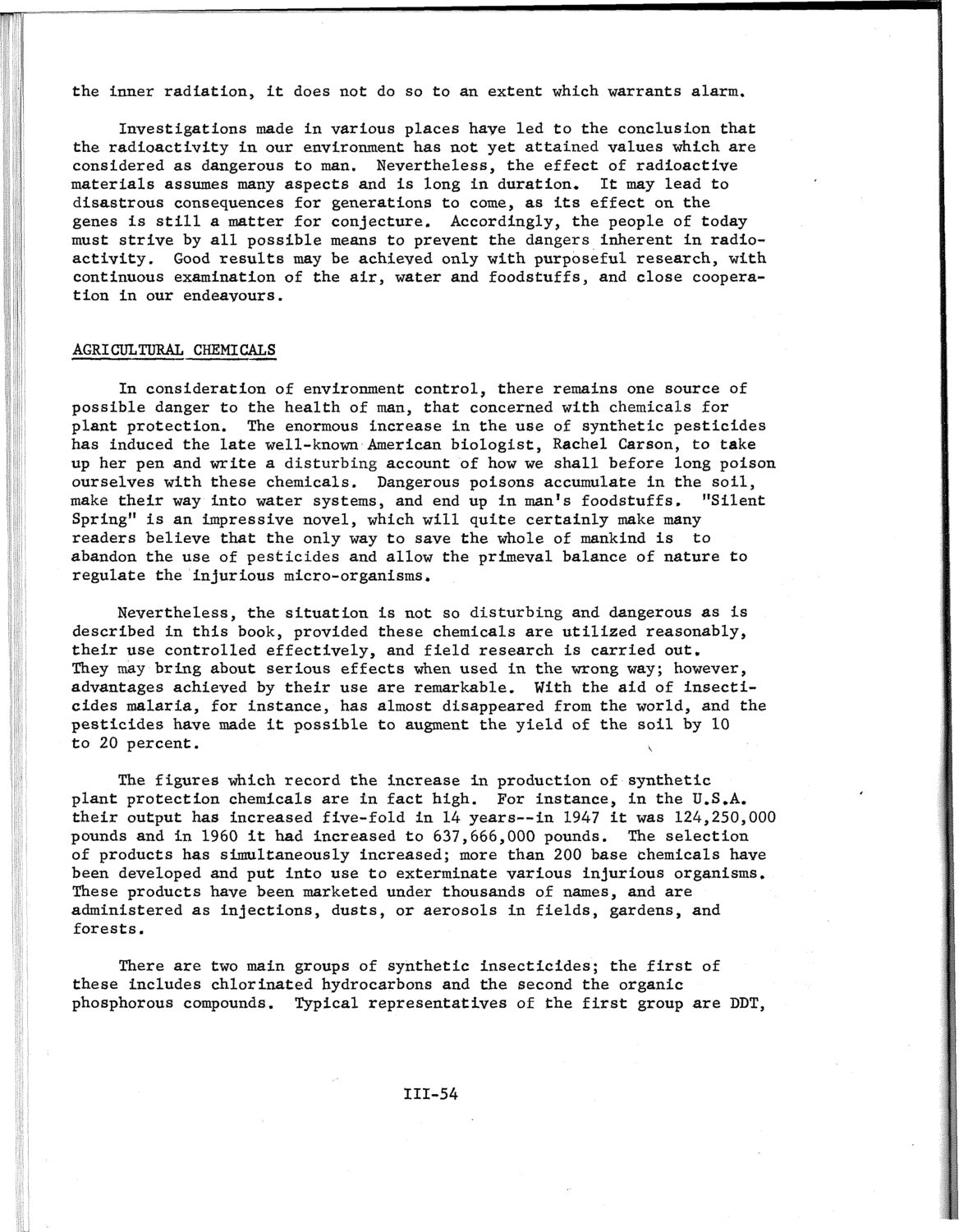| |
| |
Caption: SWE - Proceedings of the First International Conference of Women Engineers and Scientists
This is a reduced-resolution page image for fast online browsing.

EXTRACTED TEXT FROM PAGE:
the inner radiation, it does not do so to an extent which warrants alarm. Investigations made in various places have led to the conclusion that the radioactivity in our environment has not yet attained values which are considered as dangerous to man. Nevertheless, the effect of radioactive materials assumes many aspects and is long in duration. It may lead to disastrous consequences for generations to come, as its effect on the genes is still a matter for conjecture. Accordingly, the people of today must strive by all possible means to prevent the dangers inherent in radioactivity. Good results may be achieved only with purposeful research, with continuous examination of the air, water and foodstuffs, and close cooperation in our endeavours. AGRICULTURAL CHEMICALS In consideration of environment control, there remains one source of possible danger to the health of man, that concerned with chemicals for plant protection. The enormous increase in the use of synthetic pesticides has induced the late well-known American biologist, Rachel Carson, to take up her pen and write a disturbing account of how we shall before long poison ourselves with these chemicals. Dangerous poisons accumulate in the soil, make their way into water systems, and end up in man's foodstuffs. "Silent Spring" is an impressive novel, which will quite certainly make many readers believe that the only way to save the whole of mankind is to abandon the use of pesticides and allow the primeval balance of nature to regulate the injurious micro-organisms. Nevertheless, the situation is not so disturbing and dangerous as is described in this book, provided these chemicals are utilized reasonably, their use controlled effectively, and field research is carried out. They may bring about serious effects when used in the wrong way; however, advantages achieved by their use are remarkable. With the aid of insecticides malaria, for instance, has almost disappeared from the world, and the pesticides have made it possible to augment the yield of the soil by 10 to 20 percent. v The figures which record the increase in production of synthetic plant protection chemicals are in fact high. For instance, in the U.S.A. their output has increased five-fold in 14 years—in 1947 it was 124,250,000 pounds and in 1960 it had increased to 637,666,000 pounds. The selection of products has simultaneously increased; more than 200 base chemicals have been developed and put into use to exterminate various injurious organisms. These products have been marketed under thousands of names, and are administered as injections, dusts, or aerosols in fields, gardens, and forests. There are two main groups of synthetic insecticides; the first of these includes chlorinated hydrocarbons and the second the organic phosphorous compounds. Typical representatives of the first group are DDT, 111-54
| |